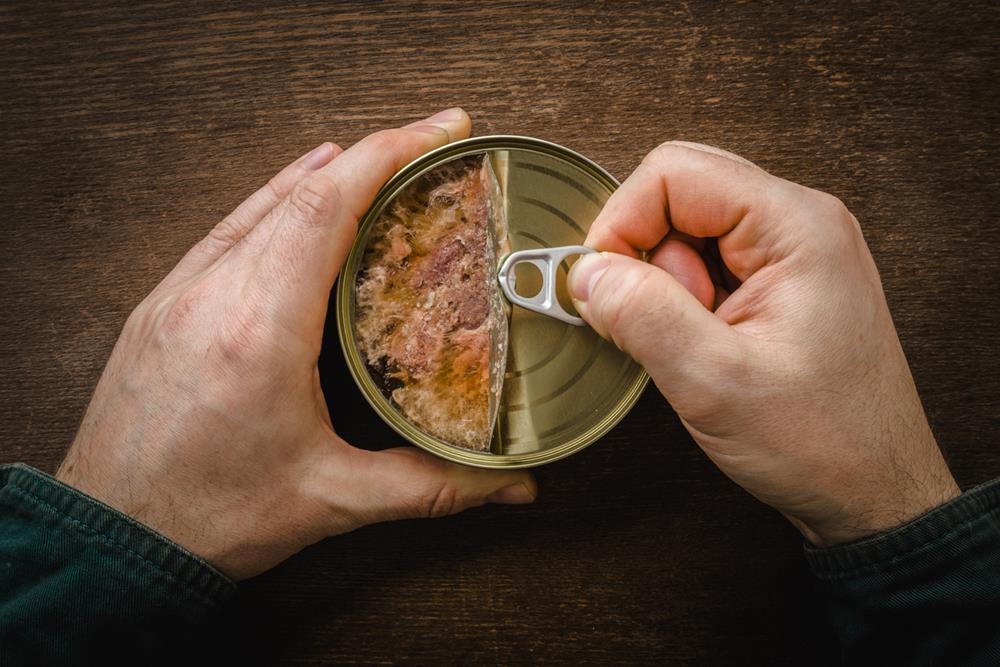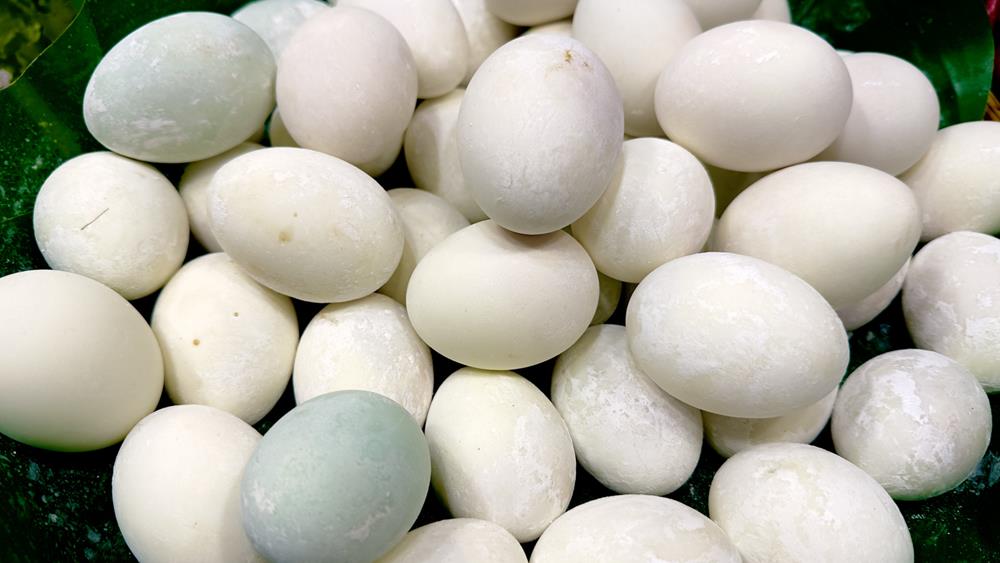Freeze Drying Vs Dehydrating: Which Is Better for Long-Term Storage?
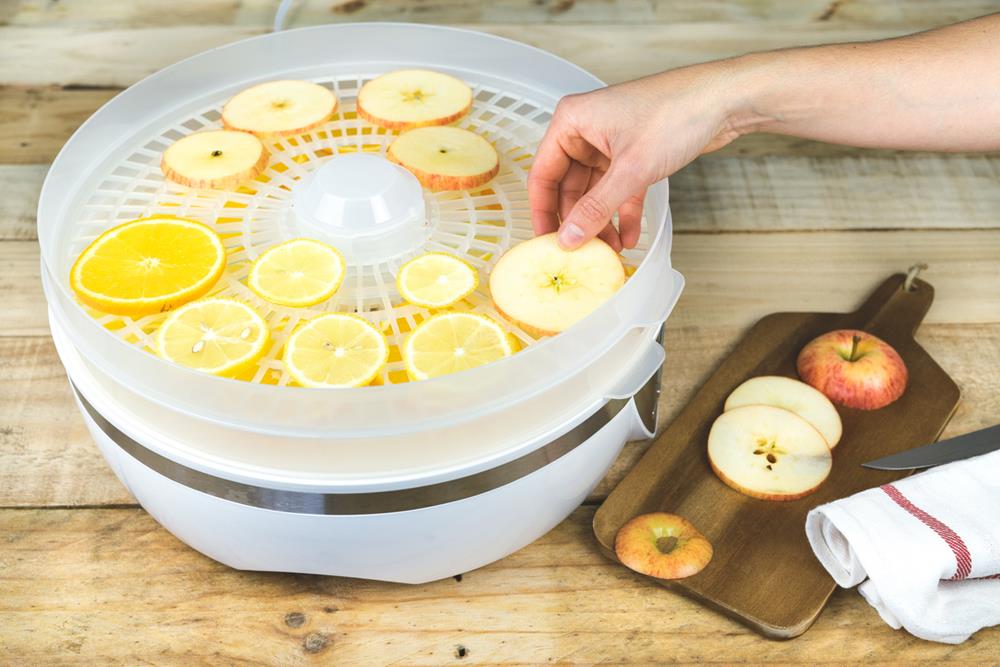
When it comes to preserving food for the long haul, two methods often come up—freeze drying and dehydrating. Both can extend shelf life, reduce waste, and help you build a reliable emergency food supply, but they work very differently and offer unique advantages.
So, which method is better for long-term storage? In this article, we’ll break down how freeze drying and dehydrating work, compare their pros and cons, and help you decide which one best fits your needs—whether you're prepping for emergencies, saving money, or simply stocking up smart.
| Category | Freeze Drying | Dehydrating |
|---|---|---|
| Moisture Removal | Removes 98–99% of moisture using low temperature and vacuum (sublimation) | Removes 80–95% of moisture using heat and airflow |
| Shelf Life | 20–25 years | 1–5 years |
| Nutrient Retention | Retains 90–97% of nutrients | Loses 40–50% of nutrients due to heat exposure |
| Flavor & Texture | Preserves shape and flavor; light and crunchy texture; rehydrates well | Chewy or brittle texture; flavor often more concentrated and altered |
| Cost & Equipment | High cost (starting around $2,500); higher energy use (~$12.65 per cycle) | Budget-friendly (starting around $40); lower energy use (~$2.11 per cycle) |
| Ease of Use | Requires vacuum pump and careful monitoring; more complex setup | Simple operation with basic time and temperature controls; beginner-friendly |
| Best For | High-moisture foods, full meals, emergency storage, backpacking meals | Snacks, jerky, fruit leathers, drying herbs, short-term storage |
| Environmental Impact | Higher energy consumption; larger carbon footprint | More energy efficient; smaller carbon footprint |
| Storage Needs | Requires more space; better for bulk long-term storage | Compact and easier to store; ideal for home kitchens |
| Overall Recommendation | Best for long-term storage, nutrient preservation, and emergency preparedness | Best for short-term use, budget-friendly prepping, and daily snacks |
Understanding Moisture Removal Techniques
When it comes to long-term food preservation, the key lies in removing moisture—and understanding how dehydration and freeze drying achieve this can help you choose the best method.
Dehydration uses heat and airflow to reduce moisture content, typically removing about 80–95% of a food’s water. However, the heat can significantly affect texture, taste, and nutritional value, with nutrient loss ranging from 40–50% depending on the food and drying temperature.
Freeze drying, on the other hand, uses low temperatures and vacuum pressure to remove moisture through a process called sublimation. This technique preserves the food's structure, flavor, and nutrients far better, removing up to 98–99% of moisture. As a result, freeze-dried foods retain about 90–97% of their original nutritional value.
Because it removes more moisture and avoids heat damage, freeze drying offers superior shelf life and nutrient retention, making it a top choice for long-term storage—especially for high-value or sensitive foods.
Long-Term Storage and Shelf Life

When considering long-term food storage, freeze drying stands out as a superior method thanks to its remarkable shelf life of 20-25 years.
Freeze-dried food achieves this by reducing moisture content to about 1%, effectively halting spoilage. In contrast, dehydrated foods retain 10-15% moisture, limiting their shelf life to 1-5 years and increasing spoilage risks.
Here are key points to remember:
- Freeze drying: Offers a long shelf life by minimizing moisture and maintaining freshness.
- Dehydrated foods: Have a shorter shelf life due to higher moisture content.
- Food preservation: Freeze drying excels at preserving food for long-term storage.
- Nutritional content: While not the focus here, freeze-dried foods generally retain more nutrients than dehydrated foods.
For emergency preparedness, freeze-dried options are ideal.
Nutritional Value Preservation
While both freeze drying and dehydrating help extend the shelf life of food, freeze drying clearly leads when it comes to preserving nutrition.
Freeze drying retains about 90–97% of the food's original nutrients, making it one of the best methods for maintaining vitamins and minerals, especially heat-sensitive ones like vitamin C and B vitamins. Because the process uses low temperatures and removes nearly all moisture (down to 1%), it helps protect the food’s nutritional content and prevents bacterial growth.
In comparison, dehydration can result in a 40–50% loss of nutrients, primarily due to the heat used in the drying process. Dehydrated foods also retain more moisture—typically 5–20%—which leads to a shorter shelf life of about 1–5 years.
If you're looking for the best method to preserve both the nutritional value and longevity of your food, freeze drying is the clear winner.
Flavor and Texture Considerations
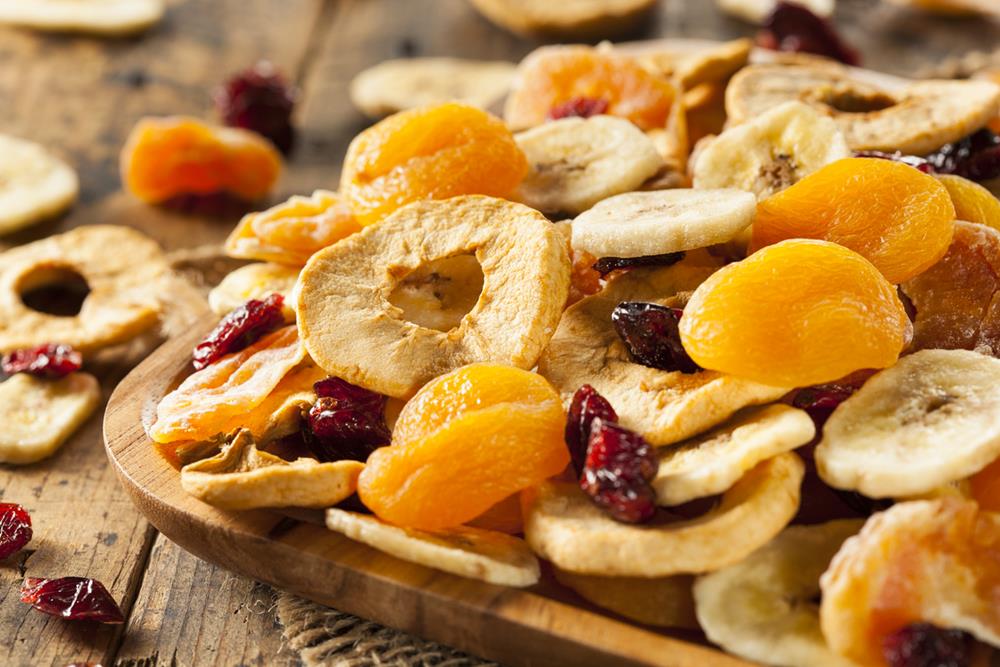
While freeze drying holds the edge in preserving nutritional value, it also offers distinct advantages in flavor and texture.
The freeze drying process removes moisture while maintaining the food’s shape, resulting in a crunchy consistency that rehydrates quickly. In contrast, dehydrated foods often become chewy or brittle, with a concentrated flavor that mightn't be as appealing.
Consider these points:
- Freeze-Dried Fruits: They retain lively colors and flavors, enhancing their appeal for snacks and meals.
- Nutritional Value: Freeze drying preserves 90-97% of original nutrients, helping maintain natural taste.
- Meats: Freeze-dried meats rehydrate to a fresher state, unlike dehydrated ones that turn into jerky.
- Smoothies: Freeze-dried can be rehydrated into liquid form, while dehydrated become fruit leather, altering texture and flavor.
- Shelf Life: Freeze-dried foods, similar to MREs' extended shelf life, offer a long-lasting food supply that reduces the frequency of stock rotation and spoilage concerns.
Cost and Equipment Investment
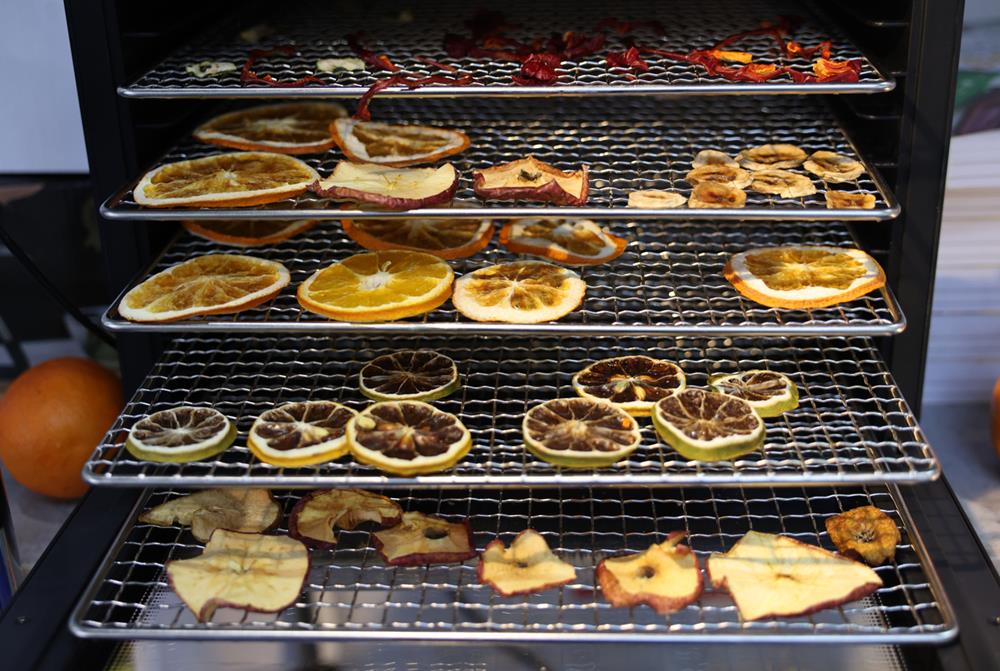
Investing in food preservation equipment can greatly impact your budget and decision-making process.
The initial investment in Freeze dryers is hefty, starting at $2,500 for home models, whereas Dehydrators can be as cheap as $40. This difference between freeze drying and dehydrating extends to the cost of running them.
Operating a freeze dryer incurs energy expenses of about $12.65 per 30-hour cycle, while a dehydrator only costs $2.11 for 10 hours. Freeze dryers typically have smaller capacity, handling 5-7 kg, compared to commercial dehydrators' 12 kg.
Despite higher maintenance needs, freeze-dried foods offer long-term food storage benefits, lasting up to 25 years. If longevity is your goal, the high initial investment might be worthwhile.
Ease of Use and Maintenance
If ease of use is your priority, dehydrators are the clear winner. They require minimal setup with basic temperature and time controls, making them user-friendly, especially for beginners.
In contrast, freeze dryers involve a complex operation, demanding vacuum pump management and precise temperature settings.
Consider these points:
- Operation: Dehydrators are straightforward, while freeze dryers need careful handling.
- Maintenance: Dehydrators simply need cleaning, but freeze dryers require regular vacuum pump oiling and malfunction monitoring.
- Energy Consumption: Dehydrators use less energy, lowering operational costs, unlike high-consuming freeze dryers.
- Storage: Compact dehydrators offer easy storage and mobility. Freeze dryers need more space due to their larger size.
Best Applications for Food Types
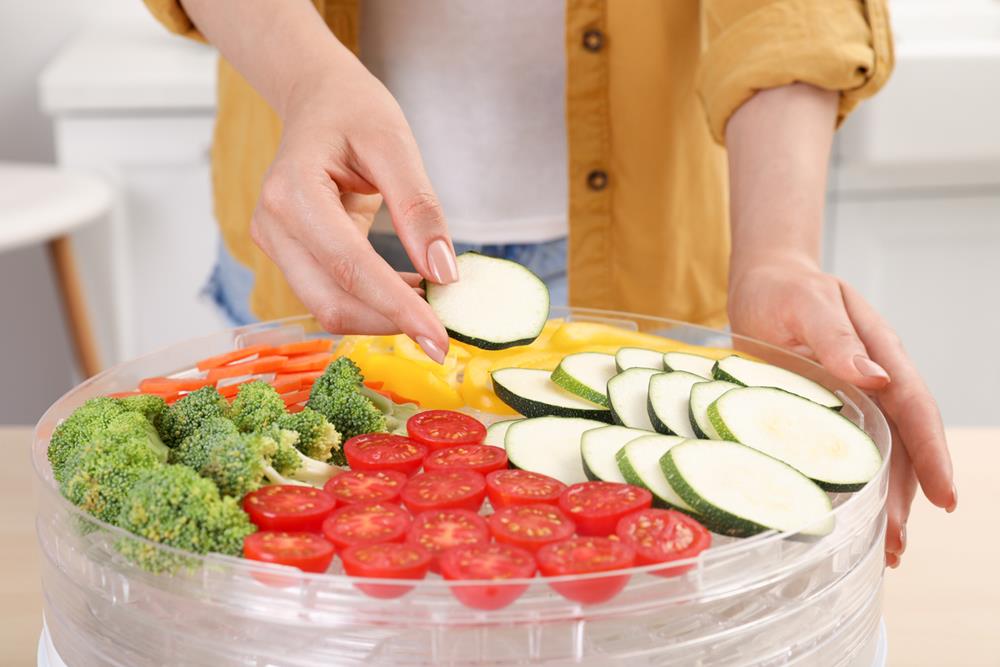
When deciding between freeze drying and dehydrating, the type of food and your intended use play a big role in choosing the right method.
Freeze drying is ideal for high-moisture foods like fresh fruits, vegetables, and cooked meals. It preserves the food’s texture, flavor, color, and nutritional value, making it great for:
Long-term food storage (up to 25 years)
Emergency preparedness
Lightweight backpacking meals
Herbs that retain vibrant color and potency
Because freeze-dried foods rehydrate quickly and taste close to fresh, they’re especially useful when quality and longevity matter most.
Dehydrating, on the other hand, is perfect for:
Jerky, fruit leathers, and other snack-style items
Drying herbs for short-term use
Quick, energy-efficient food preservation
While dehydrated foods don’t retain as many nutrients and typically last 1 to 5 years, they’re great for everyday use, trail snacks, and preserving garden produce without specialized equipment.
Choose freeze drying for long-term storage and nutrient retention, and use dehydrating for convenient, short-term snacks and simple food prep.
Environmental and Energy Considerations
When deciding between freeze drying and dehydrating for food preservation, it's vital to think about the environmental and energy implications. Freeze drying has higher energy costs due to its need for low temperatures and vacuum conditions, resulting in increased energy consumption. Here are some considerations:
- Cost Effective: Dehydrators are more cost effective, with energy consumption costing about $2.11 for a 10-hour cycle compared to $12.65 for a 30-hour freeze drying cycle.
- Environmental Impact: Freeze drying's higher energy use can lead to a larger carbon footprint, especially if non-renewable energy powers it.
- Moisture and Temperatures: Dehydrators work at mid-range temperatures, effectively reducing moisture while conserving energy.
- Long-Term Storage: Consider the environmental impact of space and infrastructure when opting for freeze dryers. Additionally, storing one to three months of food supply is suggested in high-risk areas to ensure preparedness.
Choosing the Right Method for Your Needs
When deciding between freeze drying and dehydrating, the best choice depends on your goals, budget, and the types of food you plan to preserve.
If your priority is long-term storage and maximum nutrient retention, freeze drying is the superior option. It can extend shelf life up to 25 years and preserve 90–97% of the food’s original nutrients, making it ideal for full meals, fruits, vegetables, and even high-moisture survival foods.
However, if you're working with a limited budget, dehydrating is a much more accessible choice. Dehydrators can start as low as $40, and while they only offer 1–5 years of shelf life and result in greater nutrient loss, they’re excellent for creating affordable, shelf-stable snacks like jerky, fruit leathers, and dried herbs.
Also consider the food types you’re preserving:
Freeze dryers work best for high-moisture content foods and complete meals.
Dehydrators are great for lightweight, dry snacks and short-term storage.
In emergency or off-grid scenarios, being able to preserve unconventional protein sources—like fish, snakes, or frogs—can be life-saving. Understanding both methods gives you flexibility depending on your needs.
In the end, your choice should reflect your storage goals, budget, and the foods you want to preserve. Each method has its strengths—pick the one that fits your plan.

